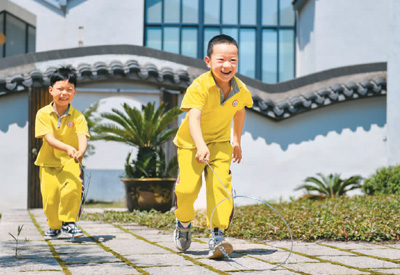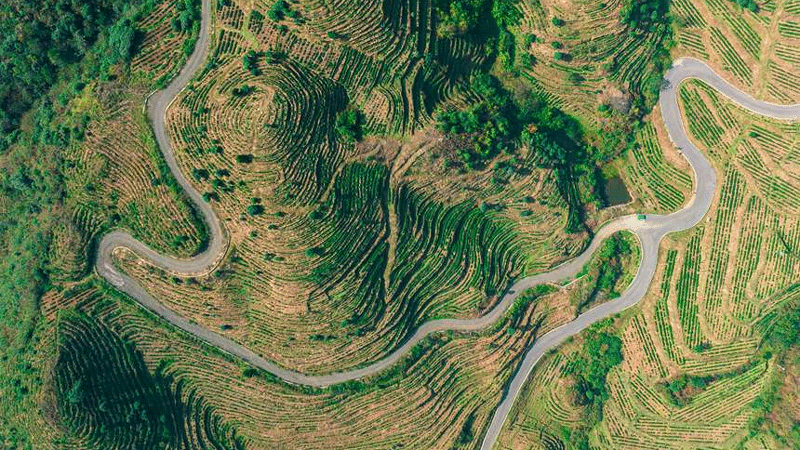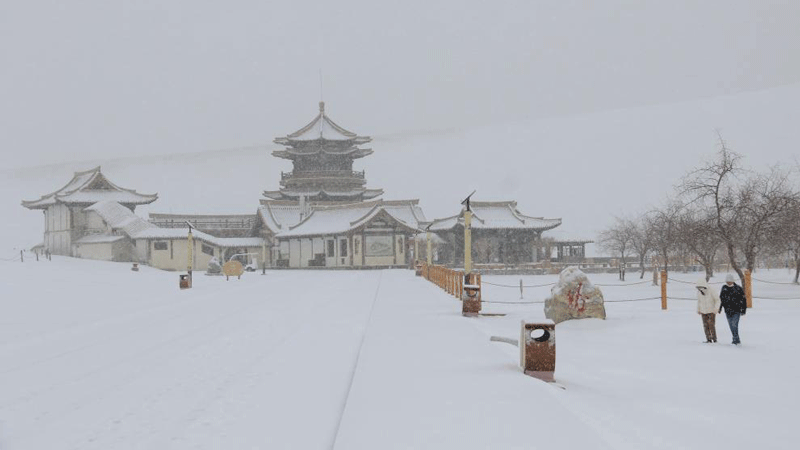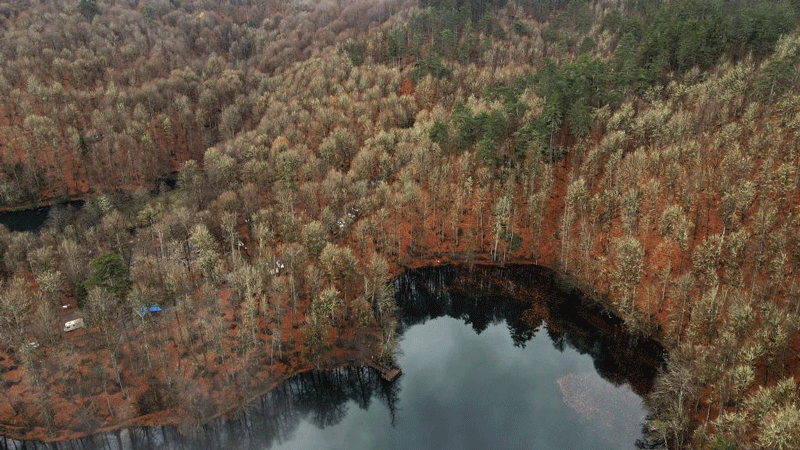China’s village museums boost rural vitalization
Rural museums have played a vital role in passing on heritage, enhancing cultural confidence and promoting the integration of culture and tourism in rural areas, becoming an important force for boosting rural vitalization.
Donghong village in Jianghai district, Jiangmen city, south China’s Guangdong Province has a long history, and is home to over 600 residential buildings that were built more than 100 years ago.

Children from a kindergarten play a game called hoop rolling at a rural museum in Gangkou village, Hongxingqiao township, Changxing county, Huzhou city, east China’s Zhejiang Province. (Photo/Tan Yunfeng)
In 2018, the village restored over 560 of these buildings to their original layout to better protect them and built eight rural museums. Most of the exhibits at these museums are old items that belong to villagers, including mortars and pestles used to pound rice, fishing boats, spinning wheels and kerosene lamps, which reflect the local farming culture and traditional folk customs and bring villagers memories of their hometown.
“As public cultural facilities, rural museums are manifestations of the collective cultural memory of people in rural areas,” said Hou Xiaolei, a professor from the School of Architecture, Central Academy of Fine Arts.
Hou explained that rural museums emphasize the shift from cultural relic protection to the exploration and utilization of cultural resources. They also encourage more people to be part of cultural protection efforts, and highlight the experience and inheritance of folk culture.

Children take part in an activity organized by a rural museum in Wenzhou city, east China’s Zhejiang Province. (Photo/Farmers’ Daily)
Unlike city museums, rural museums focus on agriculture, rural areas, farmers and their needs, helping farmers foster a sense of identity for local culture and making the countryside more harmonious, said An Laishun, vice president of the International Council of Museums and a professor from Shanghai University.
An noted that rural museums are seen as bonds that unite rural residents and as platforms that drive industrial development. Rural museums and activities launched by them can make rural tourism more attractive, drive local economic development and increase villagers’ incomes, thus injecting momentum into rural vitalization.
In Xiabao village, Liangshan township, Xinyu city, east China’s Jiangxi Province, a museum of farming culture began receiving large numbers of visitors when it opened to the public in 2015.
The success of the museum encouraged the village to establish a cultural tourism company, which integrated the museum’s exhibitions with rural tourism programs. This gave tourists the opportunity to experience farming activities such as plowing, transplanting rice seedlings and harvesting rice, and other activities including making local dishes like rice wine and tofu.
Thanks to the integration of culture and tourism, the small village now attracts over 300,000 tourists each year. In 2020, the average annual per capita income of residents in the village grew by over 5,000 yuan ($697.98).
East China’s Zhejiang Province aims to build 1,000 museums in rural areas during the 14th Five-Year Plan period (2021-2025), according to a guideline on the construction of rural museums issued by the Zhejiang provincial department of culture and tourism and the Zhejiang provincial bureau of cultural heritage in April 2022.
The guideline, the first of its kind in China, said rural museums should put on exhibitions with specific themes, cover a range of topics, and showcase local features to prevent problems such as homogenization.
An believes that extensive social participation is essential for the sustainable and sound development of rural museums and called for museums to be integrated with other local cultural resources.
Rural museums enjoy broad development prospects thanks to China’s policies for promoting all-round rural vitalization. “We need to make rural museums serve as a spiritual home for local residents and pursue the integrated development of rural museums, tourism and cultural and creative industries,” An said.
Photos
Related Stories
- Rare imperial dragon moonflask to be auctioned in Hong Kong
- Modern museum system takes shape in China
- Nighttime museums make people's cultural life more splendid
- Exposition on development, achievements of Chinese museums held in Zhengzhou
- In pics: Museum of Islamic Art in Cairo
- Guangzhou branch of the National Archives of Publications and Culture opens to public
- Australian state announces funding for Chinese community culture museum in Sydney
- Chinese museum solicits cultural relics exhibits worldwide
- Ancient bronzes of China, S Korea, and Japan exhibited at National Museum of China
- Chinese cultural institutions extending opening hours to meet needs of the public
Copyright © 2022 People's Daily Online. All Rights Reserved.









